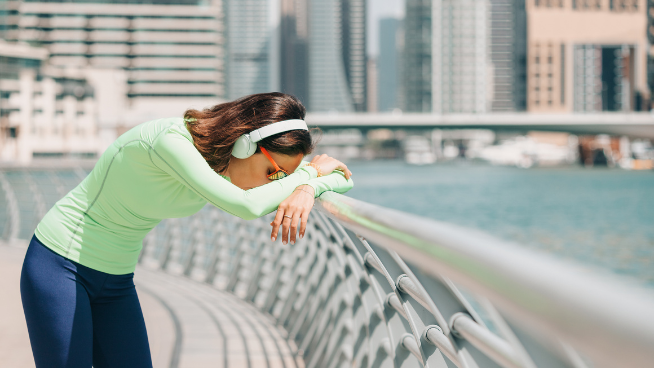No products in the cart.
Healing
How to Break the Insomnia and Low Bodily Exercise Cycle
Poor sleep and low physical activity levels (PA) are risk factors for several diseases. A recent study showed that the combined effects of insomnia and low PA increase the risks further. But short, good sleep with increased levels of PA mitigated the risks.
Young athletes who are stuck in a bad sleep- no exercise- bad sleep cycle might benefit from shortening their time in bed and starting a gradual exercise program. This article will show the importance of quality over quantity in sleep (although both are better) and how a few simple habits can break the cycle.
How much sleep should a young athlete get?
This is a common question and there is no specific answer. Many people will give you a figure of 7-9 hours; some will tell you that you ‘must’ have 8 or more hours. These are average figures: some people need nearer 9 hours sleep, some can do well on less than 7. Being told to sleep for X number of hours adds pressure to those who already have trouble sleeping. The anxiety of ‘not getting 8 hours’ can result in the bed being a place where one ‘fails’ to make yet another target.
If a young athlete is constantly tired and irritable, the likelihood is that they need more sleep. But they could also need ‘better’ sleep. The athlete who wakes up in the middle of the night, tosses and turns and then dozes off before their alarm wakens them again, might benefit from shortening their time in bed.
One solution is to set a fixed getting up time and go to bed 6 hours before that (this is problematic with teenagers who often watch tv, do their homework, and play video games whilst in their bed: they rarely ‘go to bed’ to sleep because they are on it so much). E.g., if the young athlete has to get up for school at 0700, then they should go to bed at 0100. This sounds too late, but it helps force the body to sleep through in a solid block. If they manage to sleep for 6 hours continuously, this has fewer ill effects than disruptive sleep.
Good, short sleep is better than longer, disrupted sleep.
If this works, then bring the bedtime forward by 15 minutes each night that the person sleeps solidly. This might only get to 6.5 or 7 hours of sleep, but it will be the best solution for that individual. Sticking to a set ‘get-up’ time is essential as the body adjusts. It means that by the time 0100 comes along the young athlete is so tired that their body has to sleep.
Motivation to exercise drops
One of the problems with lack of sleep is that the motivation to exercise drops. As we get tired, we feel like exercising less. As we exercise less, we may find it harder to sleep well. This then leads to a cycle that needs breaking. The combination of lack of sleep and lack of exercise then leads to an increase in health-related diseases. The good news is that moderate PA eliminates most (not all) of the sleep-reduced risks in those people who have a good-short sleep.
This is essential information for those people struggling with motivation.
Doing light, regular exercise is a lot easier to get motivated than trying to do a heroic workout that requires 100% concentration and mental reserves.
The sleep-deprived young athlete can find solace in maintaining fitness through a modified exercise program that could include:
- Brisk walking
- Cycling
- Swimming
- Yoga-type routines
- Light or short resistance training sessions.
None of these should be the ‘Go hard or go home’ type workouts that will drain the young athlete’s mental and physical reserves. Instead, they should be enjoyable, pleasant, and unmeasured (except for time). Switch off the measuring devices because they can lead to an increase in anxiety, ‘I only cycled at 40 watts; everyone else does 50.’
Build confidence through consistency of exercise and having a regular, if shortened, sleep routine. As the sleep quality and duration increase, then the intensity and type of exercise can change too. The important thing is to build for the long term, and this requires consistency and support from parents, teachers, and coaches.

